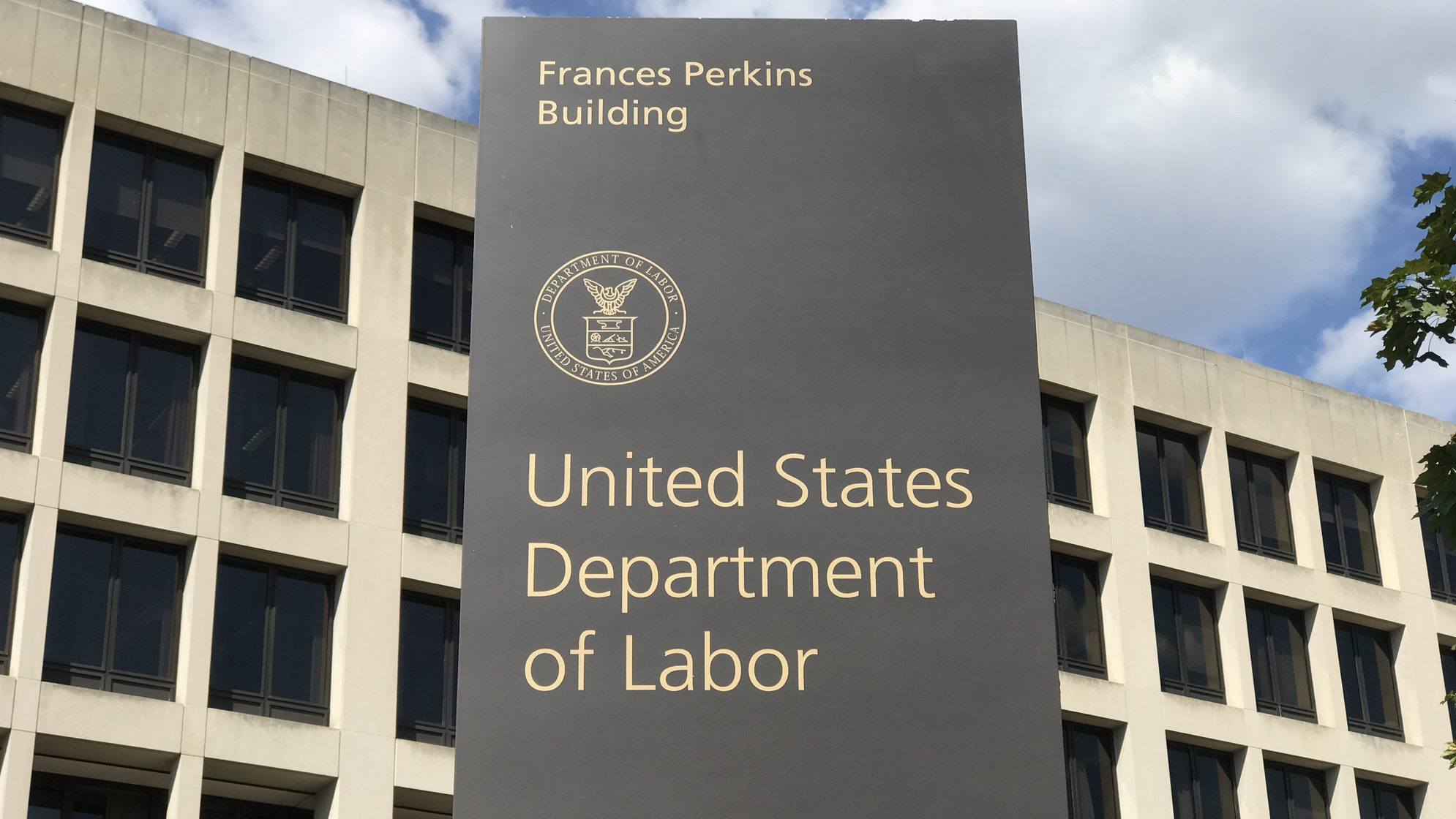DOL Issues Opinion Letter About Holidays During FMLA Leave
On May 30, 2023, the Wage and Hour Division (WHD) of the U.S. Department of Labor issued Opinion Letter FMLA2023-2-A: “Whether Holidays Count Against an Employee’s FMLA Leave Entitlement and Determination of the Amount of Leave Taken.”
The letter addresses whether an employee taking leave under the federal Family and Medical Leave Act (FMLA) during a week that includes a holiday uses leave equal to a fraction of their usual workweek or a fraction of a reduced workweek (the employee’s usual workweek less one day). The WHD advises that employees use a fraction of their usual, full workweek in this situation.
When Leave Is Taken for a Full Workweek
The FMLA entitles eligible employees of covered employers to take 12 weeks of unpaid leave for qualifying family and medical reasons. The letter notes that when a holiday falls during a week that an employee is taking a full workweek of FMLA leave, FMLA regulations specify that the entire week is counted as FMLA
leave.
DOWNLOAD THE ENTIRE PDF BELOW:
HR Brief Newsletter - July 2022
DOL Reminds Employers to Prioritize Safety for Summer Youth Hires
With summer being a popular season for youth employment, the U.S. Department of Labor (DOL) recently reminded employers hiring youth-aged workers to comply with federal child labor laws to ensure these hires have a safe and beneficial experience.
The DOL’s Fair Labor Standards Act (FLSA) prohibits employers from allowing youth-aged employees—workers who are under 18 years old—to perform certain tasks and work more than a specified number of hours. However, child labor laws can vary based on the industry and state. Failing to comply with the FLSA can result in significant consequences for employers.
Download the Entire PDF Below:
Combating Rising Benefits Costs During Periods of High Inflation
The U.S. inflation rate has increased by 8.3% over the last year, according to the Bureau of Labor Statistics (BLS). This has led to significant price increases across various consumer goods as well as employee benefits such as health insurance. In fact, one-third of U.S. employees have already seen an increase in their health costs in the last year, a survey conducted by the Employee Benefit Research Institute reported.
This increase in costs presents challenges for employers facing one of the most difficult hiring markets in recent memory. Luckily, there are some strategies employers can utilize to mitigate increasing benefits costs without shifting the burden to employees, thus remaining attractive to current and prospective employees.
Download the Entire PDF Below:
Benefits Breakdown Newsletter July 2022
Containing Costs of Chronic Health Conditions
Chronic conditions are health conditions that require ongoing management over an extended period of time. They are the leading drivers of the nation’s $4.1 trillion in annual health care costs. Thus, they are significant sources of financial stress for employers and employees alike. According to the Partnership to Fight Chronic Disease, employer health care coverage for an employee with a chronic condition is, on average, five times higher than coverage for those without a chronic disease. The most common chronic conditions affecting the workforce today include cancer, diabetes, obesity and heart disease.
Fortunately, employers can help combat chronic conditions; this could, in turn, reduce your health care costs and yield a healthier workforce. Consider the following strategies:
Focus on prevention by making preventive care affordable through medical benefits and encouraging the use of such critical care.
Be accommodating and offer arrangements (e.g., alternative worksites and flexible work options) to help make chronic care management and treatment more accessible.
Make it personal by identifying programs that offer targeted messaging and support to keep employees informed, engaged and motivated to make healthy choices or changes.
Consider programs that address the common causes of chronic conditions (e.g., tobacco usage, unhealthy diet and a lack of physical activity).
Ultimately, you’re uniquely positioned to influence and encourage employees to manage their conditions and develop healthy lifestyle habits. Following the COVID-19 pandemic, it’s critical to get regular health care back on track so your employees can better manage their conditions and improve outcomes. Reach out to learn more about chronic conditions and the workplace.
Download the Entire PDF Below:
Price Comparison Tool Required for 2023 Plan Years
Effective for plan years beginning on or after Jan. 1, 2023, group health plans and health insurance issuers must make an internet-based price comparison tool available to participants, beneficiaries and enrollees. This requirement comes from final rules regarding transparency in coverage (TiC Final Rules) that were issued by the Departments of Labor, Health and Human Services and the Treasury (Departments) in November 2020.
According to the Departments, this tool will provide consumers with real-time estimates of their cost-sharing liability from different providers for covered items and services, including prescription drugs, so they can shop and compare prices before receiving care.
Download the Entire PDF Below:
IRS Raises Mileage Rates for Second Half of 2022
For the first time since 2011, the IRS has made a midyear adjustment to the optional mileage rate used to calculate the deductible costs of operating an automobile for business and other specific purposes. The agency said the change is in recognition of recent gasoline price increases.
Rate Increase
In Announcement 2022-13, released June 9, 2022, the IRS increased the standard mileage rate for the final six months of 2022, starting July 1. During that period, the standard mileage rate for business travel will be 62.5 cents per mile, up 4 cents from the rate effective at the start of the year.
The new rate for deductible medical or moving expenses (available for active-duty members of the military) will be 22 cents for the remainder of 2022, up 4 cents from the rate effective at the start of 2022.
The rate for charitable organizations is set by statute and will remain unchanged at 14 cents per mile.
Download the Entire PDF Below:
December 2021 Benefits Breakdown
What Happens if an Employee Misses Open Enrollment?
For an employee, missing open enrollment can mean losing coverage or being unable to change benefits elections, which can have a significant financial impact on the employee. For employers, when employees miss this deadline, it can result in additional administrative burdens and unhappy or unproductive employees.
Download the Entire PDF Below:
Benefits Buzz Newsletter - June 2021
HSA/HDHP Limits Increase for 2022
On May 10, 2021, the IRS released Revenue Procedure 2021-25 to provide the inflation-adjusted limits for health savings accounts (HSAs) and high deductible health plans (HDHPs) for 2022. The IRS is required to publish these limits by June 1 of each year.
Eligible individuals with self-only HDHP coverage will be able to contribute $3,650 to their HSAs for 2022, up from $3,600 for 2021. Eligible individuals with family HDHP coverage will be able to contribute $7,300 to their HSAs for 2022, up from $7,200 for 2021. Individuals who are age 55 or older are permitted to make an additional $1,000 “catch-up” contribution to their HSAs.
The minimum deductible amount for HDHPs remains the same for 2022 plan years ($1,400 for self-only coverage and $2,800 for family coverage). However, the HDHP maximum out-of-pocket expense limit increases to $7,050 for self-only coverage and $14,100 for family coverage.
Download entire newsletter below:
Legal Update: IRS Issues Guidance on American Rescue Plan’s COBRA Subsidy
IRS Issues Guidance on American Rescue Plan’s COBRA Subsidy
On May 18, 2021, the IRS issued Notice 2021-31, a guidance document on the American Rescue Plan Act (ARPA) subsidy for continuation health coverage under the Consolidated Omnibus Budget Reconciliation Act of 1985 (COBRA).
The Notice discusses the background of the subsidy and includes 86 questions and answers (Q&As) about its application.
The COBRA Subsidy
The ARPA subsidy covers 100% of COBRA and state mini-COBRA premiums from April 1–Sept. 30, 2021, for certain assistance-eligible individuals whose work hours were reduced or whose employment was involuntarily terminated. The subsidy is funded via a tax credit provided to employers, insurers or group health plans, according to the terms of the statute.
The IRS Guidance
Among the topics covered by the 40-page Notice are how to calculate and claim the tax credit, including when a third-party payer is involved. According to the guidance, employers must document individuals’ eligibility for COBRA premium assistance in order to claim the credit.
The Q&As further clarify that:
- The subsidy is available for extended periods of COBRA coverage between April 1 and Sept. 30, 2021, due to a disability, second qualifying event or extension under state mini-COBRA.
- Involuntary termination includes constructive discharge and termination for cause, but not gross misconduct.
- Health reimbursement arrangements, dental-only plans and vision-only plans are covered by the subsidy.
Download entire PDF below:
HR Compliance Overview: The Family and Medical Leave Act (FMLA)
This Compliance Overview provides a summary of the Family and Medical Leave Act (FMLA).
The Family and Medical Leave Act (FMLA) is a federal law that provides eligible employees of covered employers with unpaid, job-protected leave for specified family and medical reasons. Under the FMLA, eligible employees may take leave for their own serious health conditions, for the serious health conditions of family members, to bond with newborns or newly adopted children or for certain military family reasons.
In addition to providing eligible employees with an entitlement to leave, the FMLA requires that employers maintain employees’ health benefits during leave and restore employees to their same or equivalent job positions after leave ends. The FMLA also sets requirements for notices, by both the employee and the employer, and provides employers with the right to require certification of the need for FMLA leave in certain circumstances.
The FMLA is enforced by the Department of Labor (DOL).
Download full document below:










